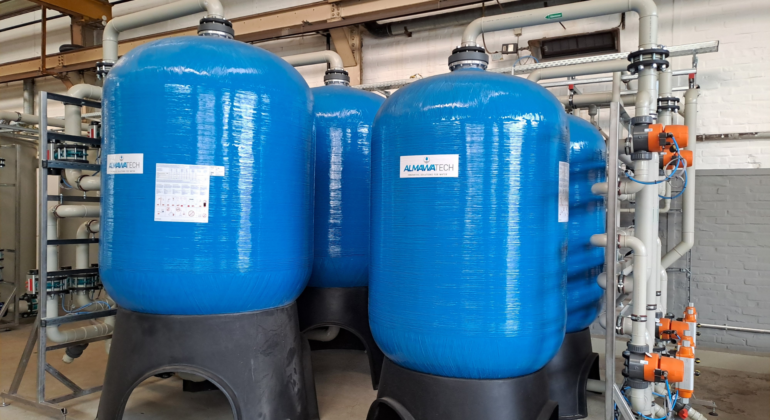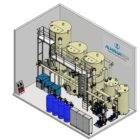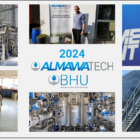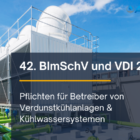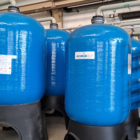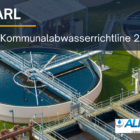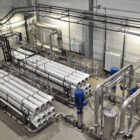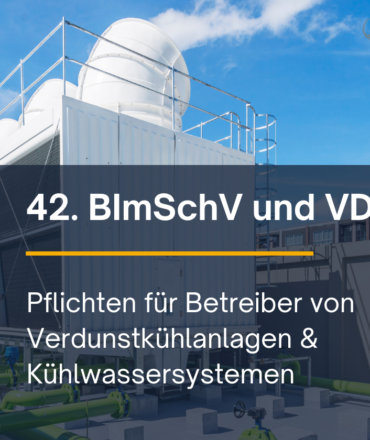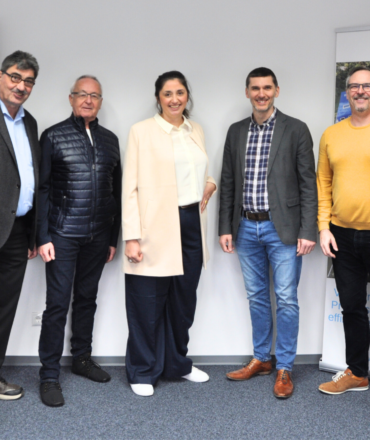Ion exchangers play a central role in modern water treatment. They are used to efficiently remove dissolved ions and adapt water to specific requirements - be it for industrial processes, the production of demineralized water (fully demineralized water) or the recycling of process water. In this article, we explain the function of cation and anion exchangers, which ions are removed with different types of resin and when it makes sense to use a CO₂ trickle filter.
Table of contents
Cation exchanger: Removal of positive ions (cations)
1. strongly acidic cation exchangers (SAC)
Strongly acidic cation exchangers contain functional groups such as sulphonic acid, which are strongly ionized and therefore remain active even at a low pH value. These exchange resins replace positively charged ions (cations) in the water with hydrogen ions. This effectively removes hardness formers such as calcium and magnesium, which is particularly important in softening and demineralization.
Areas of application
- Softening:
- Removal of hardness formers such as (calcium ions) and (magnesium ions), which cause limescale deposits.
- Full demineralization:
- Removal of all cations, including (sodium), (potassium) and (iron), in combination with anion exchangers.
Connections that are removed
- Hardener
- Sodium and potassium
- Heavy metal ions such as iron, copper or lead
Connections that are not removed
- Anions such as chloride, sulphate or nitrate
- Non-ionic compounds such as organic substances or undissolved particles
2. weakly acidic cation exchangers (WAC)
Weakly acidic cation exchangers contain carboxyl groups that are ionized in higher pH ranges and can therefore bind positively charged ions (cations). They are particularly effective in removing cations that are bound to carbonate hardness (bicarbonates). Unlike strongly acidic cation exchangers, they only work in an alkaline to neutral pH range and are therefore more selective in their application.
Areas of application
- Selective removal of carbonate hardness:
- Binding of calcium and magnesium ions, which are present in the form of bicarbonates.
- Regeneration with small amounts of chemicals:
- Compared to strongly acidic resins, weakly acidic resins require less acid for regeneration.
Connections that are removed
- Hardeners in the form of bicarbonates.
- Heavy metal ions such as iron, which are bound to bicarbonates
Connections that are not removed
- Non-bicarbonate hardness: sulphates or chlorides of calcium and magnesium
- Anions such as chloride or nitrate

Photo: Our ALMA ION cation and anion exchangers
Anion exchanger: Removal of negative ions (anions)
1. weakly basic anion exchangers (WBA)
Weakly basic anion exchangers have functional groups such as amino groups that can bind weak acids such as carbonic acid and organic anions. They work in a neutral to slightly alkaline pH range and are ideal for removing specific anions. A decisive disadvantage is that weakly alkaline anion exchangers cannot directly remove dissolved CO₂.
Areas of application
- Pre-treatment:
- Relief of strongly basic anion exchangers by pre-removal of chlorides (), sulphates () and bicarbonates ().
- Removal of weak acids:
- Binding of carbonic acid () and organic anions.
Connections that are removed
- Anions such as chloride, sulphate and nitrate
- Bicarbonate
- Weak organic anions and carbonic acid
Connections that are not removed
- Dissolved carbon dioxide
- Weakly dissociated anions that are outside the pH effective range
2. strongly basic anion exchangers (SBA)
Strongly basic anion exchangers contain quaternary ammonium groups that have a high affinity for all types of anions, including weakly dissociated acids such as silicic acid. They work over a wide pH range and are ideal for removing any anions, including those that are weakly or not fully ionized.
Areas of application
- Full demineralization:
- Removal of all anions (e.g. chloride, sulphate, nitrate) in combination with strongly acidic cation exchangers.
- Removal of silicic acid and residual alkalinity:
- Removal of trace elements and minimal residual ions to achieve maximum water purity.
Connections that are removed
- All classic anions: Chloride, sulphate, nitrate, phosphate
- Weakly dissociated acids: silicic acid
- Organic anions and residues of organic acids
- Residues of alkalinity such as bicarbonates
Connections that are not removed
- Non-ionic substances such as undissolved organic substances
- Molecular CO₂, if no CO₂ trickler was used in advance
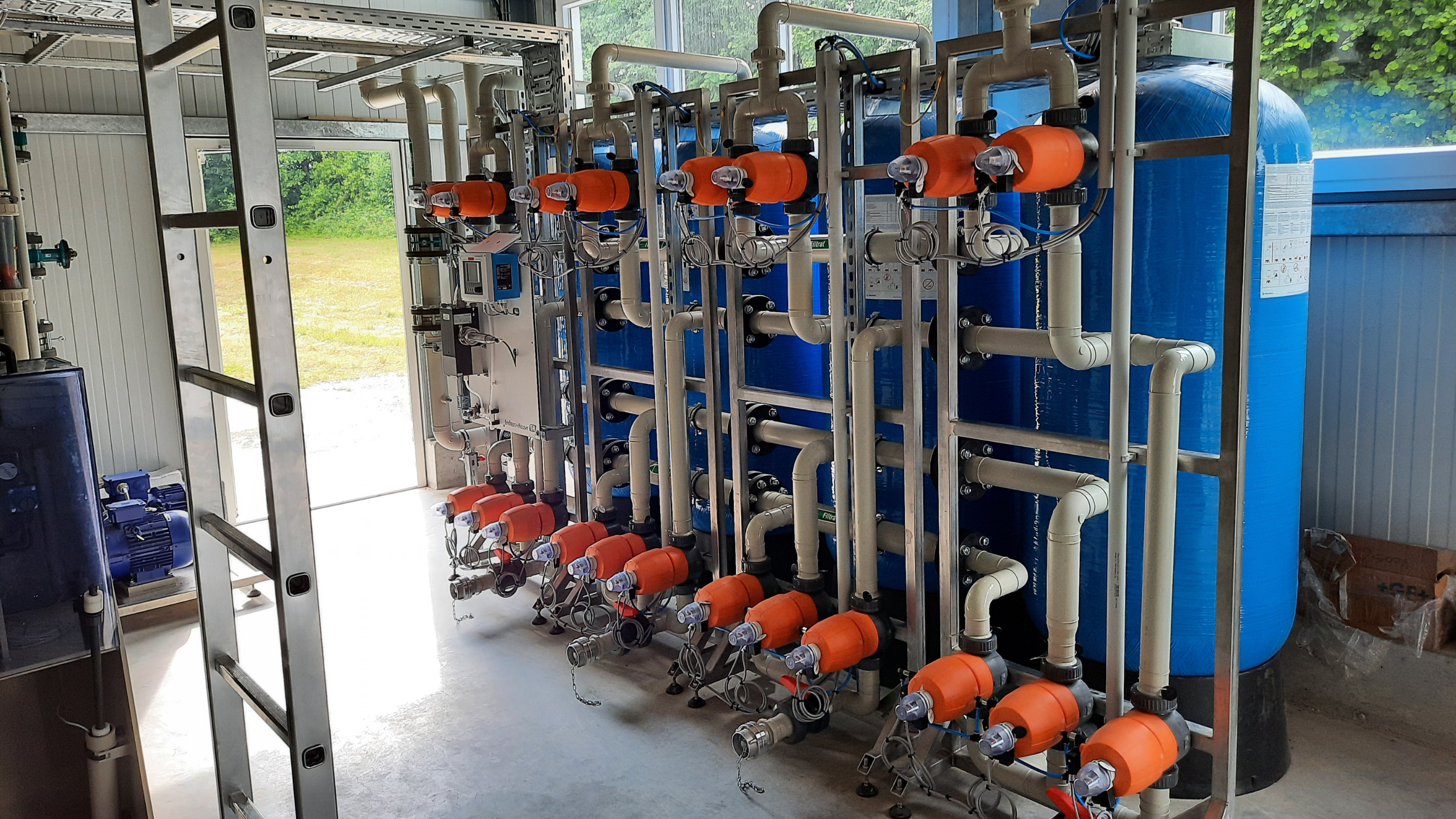
Photo: Our ion exchanger ALMA ION with upstream multi-layer filter ALMA Fil
When is a CO₂-Riesler useful?
A CO₂ trickling filter is used when dissolved carbon dioxide needs to be removed from the water. This is produced when bicarbonate is converted to carbonic acid in a cation exchanger. The carbonic acid then decomposes into and water. This dissolved CO₂ poses a challenge for water treatment, especially in systems with anion exchangers.
Reasons for using a CO₂ trickler
1. relief of the anion exchanger
CO₂ cannot be removed directly by anion exchangers as it is uncharged. However, it forms bicarbonate again in the resin by reacting with hydroxide ions, which unnecessarily strains the capacity of the anion exchanger and reduces efficiency.
A CO₂ trickler expels this CO₂ from the water before it enters the anion exchanger. This protects the resin and extends its service life. It also reduces the amount of regeneration required, as fewer regenerable ions such as bicarbonate remain in the resin.
2. optimization of the pH value
The CO₂ dissolved in the water lowers the pH value of the water as it partially converts into carbonic acid. A low pH value (below 6) can impair the efficiency of an anion exchanger and destabilize the entire ion exchange process.
A CO₂ trickler removes the excess CO₂, which stabilizes the pH value to a more neutral level (6-7). This provides ideal conditions for the anion exchanger, as the resin works most efficiently in this pH range.
3. improvement of the water quality
The removal of CO₂ reduces the residual alkalinity of the treated water. Alkalinity, mainly in the form of bicarbonates, can be undesirable in treated water, especially in the production of demineralized water (fully demineralized water).
A CO₂ trickler helps the anion exchanger to remove the remaining anions such as chloride, sulphate and nitrate more efficiently. This increases the purity of the water and further reduces conductivity, which is essential for applications in the electronics, chemical and food industries.
4. cost optimization
A CO₂-Riesler reduces the operating costs of a water treatment system. By reducing the load on the anion exchanger, less regeneration agent (such as caustic soda) is required and the service life of the resins is extended. This not only saves on chemical costs, but also reduces maintenance costs and system downtimes.
Summary
The combination of cation exchangers, anion exchangers and a CO₂ trickling filter is a key process in water treatment:
- Strongly acidic and weakly acidic cation exchangers remove positively charged ions such as calcium and magnesium and lower the carbonate hardness by replacing them with hydrogen ions.
- Weakly alkaline and strongly alkaline anion exchangers remove negatively charged ions such as chloride, sulphate, nitrate and even weakly dissociated substances such as silicic acid.
- A CO₂ trickling filter is an efficient solution for removing dissolved CO₂ from the water. This relieves the anion exchanger, stabilizes the pH value and improves the water quality by reducing residual alkalinity.
Through the targeted use of these technologies, water can be treated to a high degree of purity and at the same time economically. Selecting the right combination of ion exchangers and a CO₂ trickling filter depends on the specific requirements of the system in question. With well thought-out planning and implementation, operating costs can be reduced and the efficiency of the water treatment system can be significantly increased.
For further information on our products, please feel free to contact us at any time!


